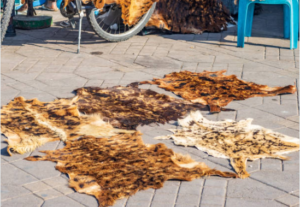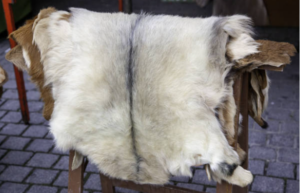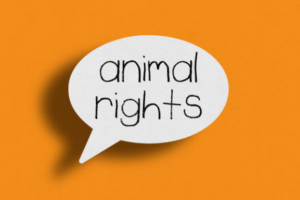Beyond Aesthetics

Beauty and fashion have long been intertwined with the use of fur, seen as a symbol of luxury and opulence. Yet, beneath the allure of fur lies a story of environmental degradation, animal suffering, and ethical concerns that are impossible to ignore. In this comprehensive blog, we will delve deep into the fur industry’s environmental and ethical impacts, shedding light on why embracing alternatives is not just a matter of conscience but also a responsibility toward our planet and its inhabitants.
The Environmental Impact of Fur Production
Resource Intensiveness
Fur farming is resource-intensive, requiring vast amounts of land, water, and food for animals. Consider these aspects:
Land Use: Fur farms occupy significant land areas, often leading to deforestation and habitat destruction. Clearing land for fur farming can disrupt local ecosystems and contribute to biodiversity loss.
Water Consumption: Raising fur-bearing animals necessitates substantial water use, which can strain local water sources and contribute to water scarcity, especially in regions facing water stress.
Feed Production: Fur-bearing animals require a diet that includes grains and other crops. The cultivation of these crops for animal feed can contribute to soil degradation, deforestation, and pesticide use.
Greenhouse Gas Emissions
The fur industry generates greenhouse gas emissions, primarily methane and nitrous oxide, which are potent contributors to climate change:
Methane Emissions: Ruminant animals like cows and sheep, whose fur is often used in fashion, emit methane during digestion. This methane is a potent greenhouse gas, contributing to global warming.
Nitrous Oxide Emissions: The production and use of synthetic chemicals in fur processing can release nitrous oxide, another greenhouse gas that contributes to climate change.
Chemical Pollution
The treatment of fur pelts involves the use of various chemicals, including pesticides and dyes, which can have detrimental effects on the environment:
Pesticide Use: Fur-bearing animals are often susceptible to parasites and diseases. The use of pesticides on fur farms can lead to chemical runoff, contaminating nearby soil and water sources.
Dye Disposal: The disposal of chemical dyes and wastewater from fur processing can contaminate local ecosystems, affecting aquatic life and potentially posing health risks to humans.
Waste Generation
Fur processing generates substantial waste, including animal remains, chemicals, and synthetic materials used in the industry:
Animal Remains: The disposal of animal carcasses and fur waste can pose environmental challenges if not managed properly, contributing to soil and water pollution.
Synthetic Materials: The fur industry also relies on synthetic materials for lining and embellishments. The production and disposal of these materials can contribute to microplastic pollution in water bodies.
Energy Consumption
Fur farming and processing require significant energy inputs for various operations:
Heating and Cooling: Maintaining appropriate temperatures for fur-bearing animals, particularly in extreme climates, consumes energy for heating and cooling systems.
Transportation: The fur industry relies on global transportation networks to source and distribute fur products, further contributing to energy consumption and greenhouse gas emissions.
Biodiversity Impact
Fur farming can have a direct impact on local biodiversity:
Escapes: There have been instances of fur-bearing animals escaping from fur farms, potentially introducing invasive species to local ecosystems and competing with native wildlife.
Predator Control: Some fur farms use lethal methods to control potential predators, which can disrupt local food chains and ecosystems.
Long-Lasting Products: Fur products are often designed to last for many years, which can contribute to a culture of overconsumption and reduce the demand for more sustainable, eco-friendly fashion alternatives.
Efficiency and Waste Reduction: The fur industry has been criticized for inefficiencies in resource use, particularly in the disposal of animal waste and by-products. Implementing more efficient waste management practices could mitigate some environmental impacts.

The Ethical Concerns of Fur Production
Animal Welfare
Fur farming is notorious for its treatment of animals, leading to several ethical concerns:
Cage Confinement: Most fur-bearing animals are kept in small, overcrowded cages, which restrict their movement and natural behaviors. These conditions can lead to severe physical and psychological stress.
Health Issues: The crowded living conditions on fur farms can result in the spread of diseases and injuries among animals. Inadequate veterinary care may further exacerbate suffering.
Inhumane Slaughter: The methods used to kill animals on fur farms vary but can be extremely cruel. Animals may be subjected to anal electrocution, gassing, neck-breaking, or other methods that can cause immense suffering.
Wildlife Impact
The fur trade also affects wild animal populations, contributing to ethical concerns:
Overexploitation: Some fur-bearing animals, such as minks, foxes, and raccoon dogs, are captured in the wild using inhumane traps. Overexploitation of these species can lead to population declines and ecological imbalances.
Non-Target Species: Indiscriminate traps and snares can capture non-target species, including endangered or protected animals, causing harm or death to unintended victims.
Transparency Issues
The fur industry has faced criticism for a lack of transparency regarding sourcing and production methods:
Mislabeling: Faux fur products are sometimes mislabeled as real fur, misleading consumers who may unknowingly purchase fur products. This lack of transparency complicates ethical choices for consumers.
Sourcing: Determining the origin of fur products can be challenging due to complex supply chains. Consumers often have limited information about the conditions in which fur-bearing animals were raised and processed.
Consumer Awareness
Many consumers remain unaware of the suffering involved in fur production:
Education: Lack of awareness about the ethical issues surrounding fur farming and trapping can lead consumers to make uninformed choices, perpetuating demand for fur products.
Changing Attitudes: Educating the public about the ethical concerns associated with fur production is crucial for fostering more compassionate and responsible consumer choices.
Lack of Regulation
Ethical concerns are compounded by the lack of comprehensive regulation and enforcement in the fur industry:
Varying Standards: Different regions and countries may have varying standards and regulations regarding fur farming and trapping, leading to disparities in animal welfare and ethical practices.
Weak Enforcement: In some areas, enforcement of existing animal welfare laws and regulations may be lacking or inconsistent, allowing for potential abuses to go unchecked.
Alternative Options
The availability of ethical and sustainable alternatives to fur raises questions about the necessity of continuing fur production:
Faux Fur: High-quality faux fur mimics the look and feel of real fur without causing harm to animals. The ethical viability of using real fur when alternatives exist is a significant concern.
Consumer Choice: The shift in consumer preferences towards cruelty-free and eco-friendly alternatives underscores the ethical challenges faced by the fur industry.

The Fur Industry’s Decline: A Sign of Change
Over the past decade, the fur industry has faced significant challenges. Growing public awareness of its environmental and ethical impacts, along with changing consumer preferences, has led to a decline in fur’s popularity. Several notable developments underscore this shift:
- Fashion Industry Abandonment: Prominent fashion brands and designers, including Gucci, Versace, and Prada, have announced fur bans in their collections, reflecting a broader industry trend towards ethical and sustainable fashion.
- Legislation: Some countries, including the UK and Austria, have banned fur farming, recognizing the ethical concerns associated with the practice. Other regions are considering similar legislation.
- Consumer Demand: A rising number of consumers are choosing cruelty-free alternatives, such as faux fur and synthetic materials, as a testament to their ethical values and environmental concerns.
The shift away from fur offers an opportunity for sustainable and ethical alternatives that are equally luxurious and stylish. Let’s explore some of these alternatives:
- Faux Fur: High-quality faux fur mimics the look and feel of real fur without causing harm to animals. It’s available in a wide range of styles and is increasingly used by fashion designers.
- Plant-Based Materials: Innovative materials such as Tencel, Piñatex (made from pineapple fibers), and mushroom leather offer ethical and sustainable alternatives to fur and traditional leather.
- Recycled and Upcycled Materials: Reusing and repurposing materials, including vintage fur and discarded fabrics, is a sustainable way to create fashion pieces without harming animals or the environment.
- Sustainable Practices: Brands are adopting sustainable practices, such as responsible sourcing and ethical manufacturing, to reduce their environmental and ethical footprint.

Consumer Empowerment and Responsibility
As consumers, we have the power to drive change in the fashion industry. Here’s how you can make a positive impact:
- Educate Yourself: Learn about the fur industry’s environmental and ethical issues. Understand the difference between real fur and faux fur.
- Support Ethical Brands: Choose fashion brands that prioritize sustainability and ethical practices. Look for certifications like PETA’s “PETA-Approved Vegan” label.
- Advocate for Change: Raise awareness among your friends and family about the issues surrounding fur. Encourage them to make informed choices.
- Buy Secondhand: Consider buying secondhand or vintage fur products if you’re interested in owning fur. This reduces demand for new fur production.
- Support Legislation: Advocate for stricter animal welfare laws and regulations in your region to protect animals from inhumane treatment in the fur industry.
The environmental and ethical impacts of the fur industry are undeniable, and they demand our attention and action. The shift towards clean, ethical, and sustainable fashion is an encouraging sign of progress. By choosing alternatives to fur and supporting brands that prioritize sustainability and ethical practices, we can collectively contribute to a fashion industry that respects the planet and its inhabitants. Together, we can build a brighter, fur-free future that embraces beauty, compassion, and responsibility.

